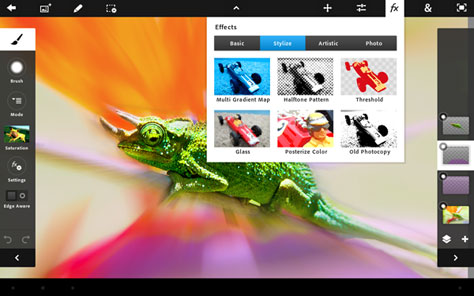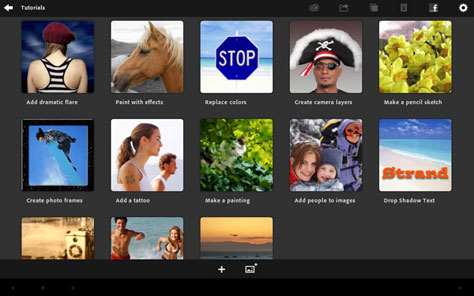Meet the New Member of the Photoshop Family
You may have heard that on Monday, October 3, Adobe revealed a new member of the Photoshop family. Called Photoshop Touch, it will run on mobile devices. At first, it will be available only on devices that use the Android operating system (OS), such as Samsung Galaxy tablets. But not too long after, Adobe will finish developing a version that runs on the iOs, including Apple’s iPad. No matter what OS you have, the app’s cost will be $9.99. Just a wee bit less than Photoshop on the desktop.
So Many Photoshops
It’s my job to know about all the members of the Photoshop family, yet sometimes even I’m confused. So as part of introducing you to Photoshop Touch, I’ll explain what branch of the family tree it occupies. Since creative pros are visual thinkers, I’ll start with an image:

The desktop Photoshop application is the trunk of the tree. Photoshop Lightroom is a significant side branch that is a digital darkroom for processing photos. Photoshop Elements has many of the capabilities of the big daddy Photoshop but has been retooled for hobbyists. Photoshop Touch, Photoshop Express, Color Lava, Easel, and Nav are all apps for mobile devices. I made Photoshop Touch’s name the largest and darkest in color of all the apps because it has the most power. Rounding out the family tree is Photoshop.com, an online community for sharing and very basic editing.
Although all of these are part of the family, they all have different features, different interfaces, and different audiences.
What Is Photoshop Touch?
Photoshop Touch is not meant to replicate big daddy Photoshop on a tablet. For one thing, tablets can’t match the computing power of a desktop or even laptop computer. But rather than see that as a limitation, the Adobe team working on Photoshop Touch turned it into an opportunity to shake up both the way you use the app and what you can create with it.
For example, you navigate through tools using your fingers or a stylus. Most of the edits are accomplished the same way. Here are examples of the interface and some of the tools in action:




In a class I attended yesterday, Adobe’s Russell Brown demonstrated how being open to the possibilities of the tablet and new app can take your projects to unexpected places. He first brought in a photo of himself as a gothic/steampunk Mad Hatter, then an image of an empty warehouse. He applied a few effects to make the warehouse look suitably gloomy, and then he composited the two shots.
But something was still missing — the image called out for more drama. And so he made a new layer and turned on the tablet’s camera, then shone a flashlight on the tablet so that its beam fell in the area of the warehouse where he wanted a brighter light. Then he combined thatlive camera feed with a blending mode, and the flashlight’s beam became a seamless part of the overall composition. It was an amazing demonstration, and it took about five minutes to create the entire piece — including precisely masking the shot of himself out of the original background.
Adobe isn’t committing to a firm release date for Photoshop Touch, but product manager John Nack promises that it will be available “shortly”.
The video below, featuring Russell Brown, is a good introduction to the app:


